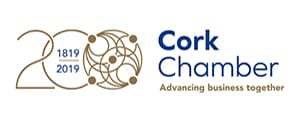choosing the best image format for your website is an important component of web design. Images can add visual appeal to your website and help to communicate your message effectively to your audience. However, it is important to choose the right type of image for your website, as different image types have their own pros and cons. In this article, we will outline the different types of images commonly used in websites, along with their advantages and disadvantages of the various formats.
1. JPEG
Firstly, JPEG is one of the most common image formats used in websites. It is a compressed image format that is designed to reduce the size of images without sacrificing too much quality. JPEG images are ideal for photographs and images with a lot of detail.
Pros: JPEG images are easy to compress and therefore ideal for web use. They have a good balance between image quality and file size, making them an efficient choice for website designers.
Cons: If JPEG images are compressed too much, they can lose quality and become blurry. Additionally, they are not ideal for images with transparent backgrounds, as they do not support transparency.
2. PNG
The PNG format is another popular image used in websites. These images are uncompressed, which means they retain their quality and are ideal for images with transparent backgrounds.
Pros: PNG images support transparency, making them ideal for logos and other images with transparent backgrounds. They also retain their quality, even when compressed, making them ideal for web use.
Cons: PNG images tend to be larger in size than other image formats, which can impact the loading speed of your website.
3. GIF
GIFs are a popular image format used for animated images, such as banners or logos that move.
Pros: GIF images support animation, which can add visual interest to your website. They are also small in size, making them ideal for web use.
Cons: GIF images are limited in colour and resolution, which can impact their quality. They are also not suitable for images with a lot of detail.
4. SVG
SVG is a vector-based image format that is ideal for icons and logos. It is a scalable image format, which means that it can be resized without losing quality.
Pros: As they are code-based SVG images are scalable, which makes them ideal for logos and icons that need to be displayed at different sizes. They are also small in size, making them ideal for web use.
Cons: SVG images are not ideal for photographs or images with a lot of detail. They are also not supported by all web browsers.
5. WebP
WebP is a relatively new image format that was created by Google. It is a compressed image format that is designed to be small in size without sacrificing quality.
Pros: These images are small in size, which makes them ideal for web use. They also retain their quality, even when compressed.
Cons: WebP images are not supported by all web browsers, which can impact their usability.
Summary
In summary, using images in a website is an important component of web design. However, it is important to choose the right type of image for your website, as different image types have their own pros and cons.
By understanding the different types of images and their advantages and disadvantages, you can choose the right image format for your website that meets your needs and if you can’t find the right format for your image, you can always change the image format here. Whether you are looking to add visual interest to your website, or convey your message more effectively to your audience, the right image format can make a significant difference to the overall success of your website. Your image format and size can also affect the speed of your website so be sure to check out our tips on site speed.


